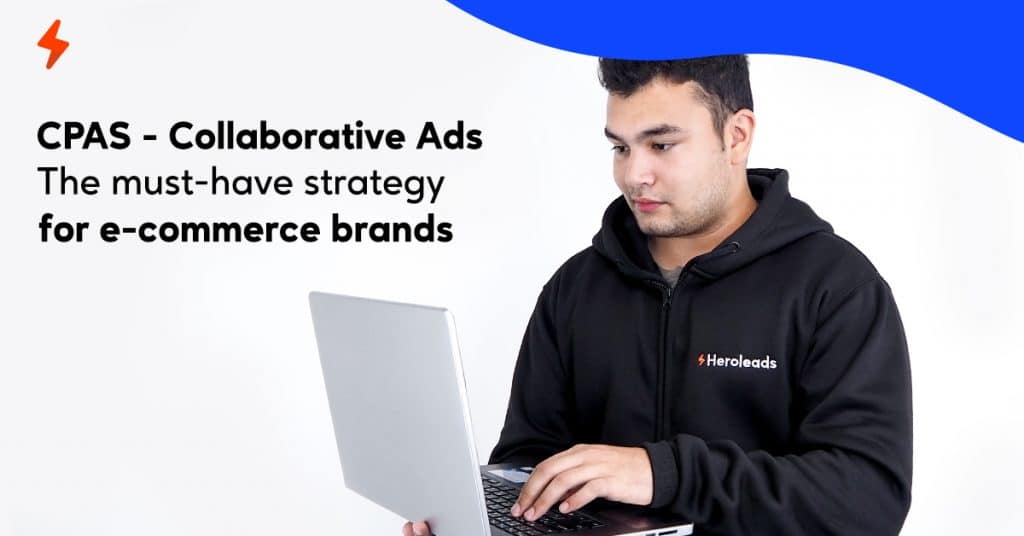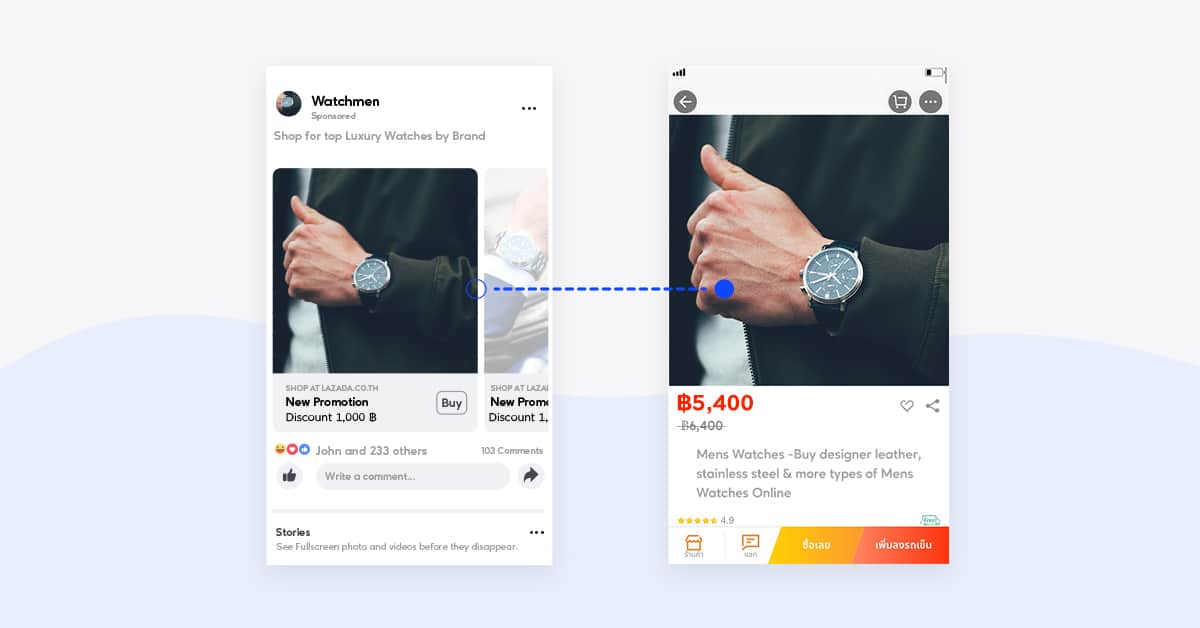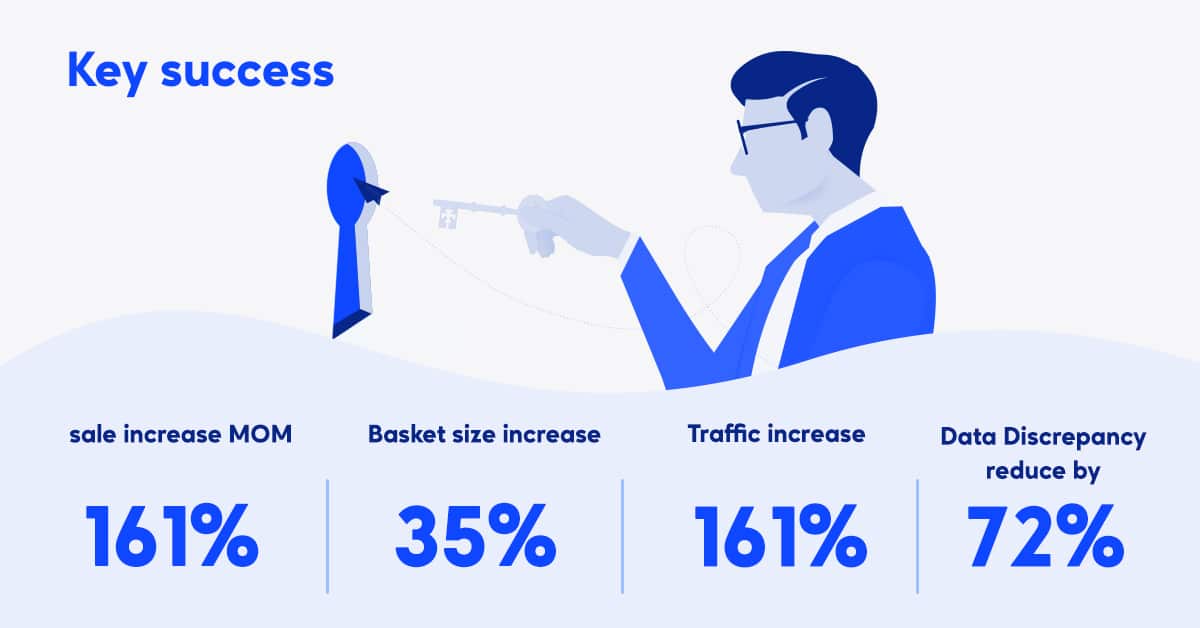Grow your e-commerce brand with CPAS

As an e-commerce brand, we know you are always looking to build ROI-positive campaigns. CPAS can provide you an opportunity to build strong e-commerce campaigns and link them across Facebook, Shopee and Lazada.
CPAS might be a fairly new concept for even experienced e-commerce brands and users since it has been launched by Facebook recently. Here is a quick introduction and the benefits of CPAS.
What is CPAS?
CPAS stands for Collaborative Performance Advertising Solution. It is a new platform created by Facebook in collaboration with e-commerce websites. This tool enables the brands to drive shoppers to buy their products online via Facebook’s dynamic ads.
Also, for brands, it has finally become possible to quantify the conversion rate of digital ads on e-commerce platforms, which was impossible before. Besides this, they will also be able to simplify and streamline the whole process.
The reason CPAS is called collaborative ads because they enhance the collaboration between the brands and retailers.
How does CPAS work?

Facebook e-commerce campaigns linked to shopee and lazada
Let’s understand this through an example. A watch store, Watchmen Company, wants to sell its new line of shoes online. They create dynamic ads on Facebook using some online retailer’s product catalog, let’s say Lazada.
The copy on the Facebook dynamic ad will look something like this “Watchmen, Buy on lazada.com”.
A user sees the dynamic ad for the watch and decides to make the purchase. Now, when the user will click on the Facebook Ad to make a purchase, they will be redirected to Lazada’s website or app to complete the purchase. It’s this simple!
Why CPAS is a much-needed tool?
CPAS is extremely useful for:
- Brands: To collaborate with other brands and get better visibility on campaigns’ conversion rate
- Budget/Media Planners: To get a better picture of how ads are affecting sales and accordingly allocating the budget in a strategic way
In general, CPAS provides a strong base of data to make any decision. From massive costly flagship stores in trendy neighborhoods to brand-dedicated websites, brands have always tried to innovate and tie to identity the presentation of their products.
In recent years, household brands have witnessed a trend shift in the display of their products on e-commerce platforms. Typically just listed as offers on the platforms, the brands realized that it was more efficient to invest in those platforms rather than have their own website.
Usually, the customized websites were more costly to run, and have to be frequently managed and nurtured.
However, those products posed an ordeal for marketers and analysts when it came to quantification. In this, the most crucial part, the conversion rate, was left out due to data protection by the platforms.
The uncertainty of not knowing how ads were affecting sales through those platforms was an issue. Optimizers and budget planners had to operate anyways when it came to budget allocation, which is far from ideal.
That’s where CPAS came into the picture and resolved all these issues for marketers.
USP of CPAS
Other than tracking marketplace performance ability with CPAS, targeting is also important and it is only possible with CPAS to retarget users specifically and create custom exclusion based on marketing strategy.
As CPAS have a shared product catalog with tracking ability, advertisers will be able to customize their ads based on each user experience. For example, user1 saw productA but did not make any purchase. Later when the user1 uses Facebook, he/she will see productA listed in the first place in the ad. This will likely trigger the user1 to make a purchase. There are countless options to customize this CPAS strategy, the only limitation is your imagination.
Besides retargeting strategy, audience exclusion is also another great feature available for CPAS. It enables advertisers to choose not to target those who view or add products to cart or make purchases for specific days. For example, user1 already purchased productA which he/she will not likely to repurchase within 14 days. CPAS allows advertisers to exclude user1 and any users that meet this criterion so the amount of ad spend will not be wasted resulting in lower cost per purchase.
Case Studies:

Success metrics for CPAS – eCommerce revenue and sales
Let’s take one of Heroleads own clients as an example, a very well-known FMCG giant out of Japan. This client has an e-store set up on Lazada. Its objective is to not only make its targeting more dynamic but also be able to:
- Put a clear number on its conversion rate to be able to allocate excess budget elsewhere (or invest more in digital ads depending on the data)
- Make the creative process and information gathering purchase focused.
CPAS allowed all of this using a centralized platform that directly connects the Lazada metrics to the Marketplace ones. Optimization then becomes automated.
The feature could be used as a means to improve online sales as well as give more visibility to offline purchases.
CPAS could boost offline sales, as a client could see the advertisement in the marketplace and then proceed to buy it in a physical store.
Conclusion:
Bottom line is, thanks to CPAS, your brand will be able to quantify the conversion rate of digital ads on e-commerce platforms. You will also be able to simplify and streamline the whole process leading to stronger sales and a better return on your ad spend.
Heroleads is now able to obtain data on conversion rates and look into untapped information for purchases made on the e-store via the Facebook portal.
This fills a massive void of information for the budget planners. This could also be a solution to a long-lasting problem as it allows brands to make decisions backed by data.
Here at Heroleads, we have access to the top platforms in Thailand such as Lazada, Shopee, JID, and many more. Connect with us NOW for a free marketing digital audit!
Recent posts


